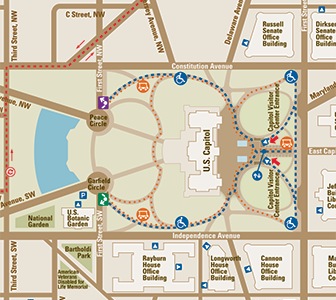Use the essential questions to select a lesson that completes your curriculum.
 |
The Capitol BuildingWhat should a Capitol building look like? How does the U.S. Capitol building serve as a symbol of the U.S. government? |
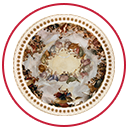 |
The Apotheosis of Washington by Constantino BrumidiHow can one interpret the Apotheosis of Washington? What symbols, stories and artistic approach did Constantino Brumidi employ? |
 |
The Frieze of American HistoryWhat historic events are featured in the Frieze of American History? How do these moments reflect both the history of our nation and the time within which they were selected to be included in the Frieze? |
 |
Statues from the National Statuary Hall CollectionWhat is the significance of the statues in the National Statuary Hall Collection? Which individuals are featured in this collection? How does their inclusion reflect the time in which they were selected? |
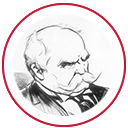 |
Congressional BiographyWhat is a biography? Who are the people who represent Americans in Congress? How do you compose a biography about one of the representatives? |
 |
Limiting Child Labor: Providing for the General WelfareHow does Congress gather information, and how does it use that information to create legislation? How can this research impact the lives of Americans in both the short and long term? How can a bill that has been deemed unconstitutional still inform future legislation? |
 |
National Interstate and Defense Highways ActWhat role did Congress play in the development of the national interstate system? What evidence did President Dwight Eisenhower cite to justify Congressional funding for the National System of Interstate Highways? How did the passage of the Federal-Aid Highway Act fulfill Congress' mission "to provide for...general Welfare" (Article 1, Section 8, Constitution of the United States)? |
 |
The Clean Water ActHow does a bill become a law? What is the role of Congress and the President in this process? How did the Clean Water Act of 1972 become a law? |
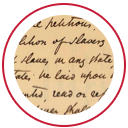 |
The U.S. House of Representatives and the Gag RuleWhat is a gag rule? Why was a gag rule imposed by the House of Representatives? What are the implications for the country if the House of Representatives should pass other gag rules? |
 |
Secession and the SenateWhat is secession? How did secession of the southern states from the Union during the Civil War affect the Senate and how did the members respond? |
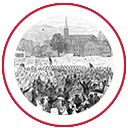 |
The District of Columbia Compensated Emancipation Act of 1862The D.C. Compensated Emancipation Act was an important and symbolic victory. It was part of a larger struggle over the meaning and practice of freedom and citizenship. What does it mean to be a participating member of society? What does freedom and citizenship mean? |
 |
Philip Reid and FreedomHow are concepts, such as freedom, represented in works of art? What do specific works of art or architectural features tell us about what was important to the people who designed or made them, particularly if they are telling a story about the importance of freedom? |
 |
Congressional Legislature and the Civil War: Telling the Story with Primary SourcesWhat are we able to learn about an event, people or place by studying primary source documents? |

